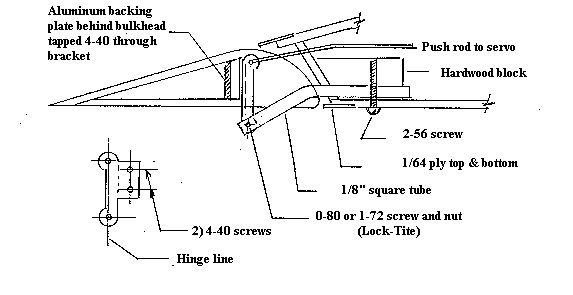|
Cantilevered Hinges
Tom Noser
If you are going to do scale aileron, elevator or rudder hinges,
you are going to have to move the hinge line back from the leading edge of the control
surface. "So, tell me something I don’t know" you say.
Well sure you know that, but what do you use to handle the
cantilever problem? (You know, there’s a gap between the support structure and the
hinge point, and the beam spanning that gap is called a cantilever). Well I’ve been
using metal tubing to do the job and I haven’t seen anybody else doing that.
That’s probably because I haven’t been to enough scale
contests and talked to enough builders, or maybe it’s because these guys are just
being cagey, but here’s a method I’ve been using for about eight years.
The first time I used this system I was building a Piper
Tri-Pacer which uses Friese ailerons, and the cantilever in that case is severe as you can
see in Figure 1.

I use 0.032" annealed aluminum for the bracket. The same
bracket is used for the hinges without the operator and serves the flap as well as the
aileron. This type aileron was used on the P-47 and many
other WW II aircraft.
The aileron is built using a bulkhead just aft of the hinge line.
Backing plates are cemented to the back
of the bulkhead to provide a means of mounting the brackets. You can see that this aileron
can be easily balanced by cutting a saw kerf into the nose and gluing in a strip of
solder.
Zero gap hinges shown in Figure 2 are more common. The hinge line
is more properly located further to the rear so that the surface can be more easily
balanced. (See Figure 4)
|